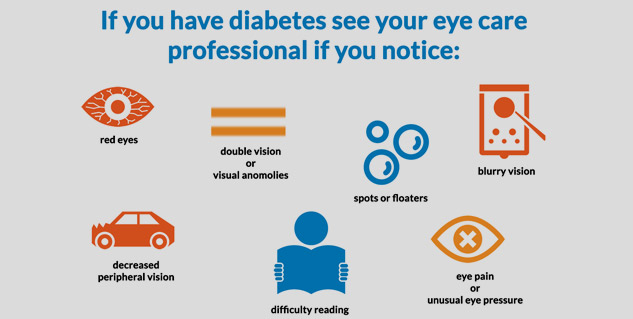
Diabetes is usually accompanied by symptoms like fatigue, frequent urination, and blood sugar fluctuations. Yet there is one important thing which many patients do not often consider, which is diabetes and eye health. According to experts, one needs to know about the hidden infections and conditions that can arise due to diabetes.
Table of Content:-
So the editorial team of Onlymyhealth reached out to Dr Aditya Kelkar, Director, NIO Super Specialty Hospital - Pune, who shed light on hidden infections and eye conditions that can quietly develop in people living with diabetes.
How Diabetes Affects the Eyes
High blood sugar can cause damage to the small blood vessels in the retina, which is the light-sensitive tissue behind the eye. Diabetic retinopathy, which is the most common cause of blindness for adults worldwide, can result from this damage. "Many patients do not realize how insidious the onset of this disease is. Early stages may not be symptomatic,” highlighted Dr Kelkar.
Also Read: The Easiest Ways to Get More Protein in Your Diet

Apart from retinopathy, diabetes can also lead to an increased risk of other eye problems such as glaucoma, cataracts, and dry eye syndrome. Glaucoma, for example, results from optic nerve damage, generally from increased pressure within the eye. People with diabetes are at a higher risk because the increased glucose might affect fluid drainage within the eyes. Cataracts, which are the clouding of the lens, usually start to develop sooner in those people suffering from diabetes, tending to reduce clarity of vision over a period of time.
Hidden Eye Infections and Conditions
Besides these well-recognised complications, diabetes can also render patients more vulnerable to specific infections and less obvious conditions. “People with diabetes have a weakened immune response, which means infections can develop more easily and heal more slowly,” shared Dr Kelkar.
One such condition is bacterial keratitis, an infection of the cornea. Symptoms can include redness, pain, blurred vision, and permanent scarring if left untreated. Fungal eye infections occur less often but are a possibility, more so for contact wearers or those who experience eye trauma.
Another unseen complication is DME. This involves fluid accumulation in the macula, the center of the retina, causing swelling and thereby distorting vision. Dr Kelkar pointed out, “DME can develop silently, and patients often notice changes in their vision only when it has advanced. Eye examinations are required routinely to detect this early.”
Also Read: Expert Shares How Weekend Habits Quietly Impact Sperm Quality | Tips To Control

Preventive Measures and Regular Check-ups
According to experts, prevention and early detection are the best ways of maintaining eye health in diabetic patients. These include:
- Regular Eye Examinations: The American Diabetes Association recommends that adults with diabetes have at least a yearly comprehensive eye exam by an ophthalmologist or optometrist.
- Blood Glucose Control: Good blood glucose levels can help significantly in minimising the risk of all the diabetic eye complications.
- Healthy Lifestyle Choices: Diet, exercise, and quitting smoking can protect blood vessels in the entire body, including the ones in the eyes.
- Prompt Attention to Symptoms: Any sudden change in vision, eye pain, or unusual redness should prompt immediate consultation with an eye specialist.
Bottomline
Diabetes does not only affect blood sugar, it also silently damages eyes by causing infections, retinopathy, glaucoma, and more. Long-term vision can only be preserved through regular screening and proactive management.
Also watch this video
FAQ
Q1. How frequently does a diabetic need to have an eye checkup?
A1. It is suggested that a full eye check-up be performed once every year, or more often should complications arise.Q2. Can good blood sugar control prevent diabetic eye diseases?
A2. While it may not eliminate the risk completely, maintaining stable blood glucose levels significantly reduces the likelihood of developing severe eye complications.Q3. Are diabetic eye infections painful?
A3. Some infections, like bacterial keratitis, can be quite painful, with associated redness and blurred vision, while many, such as diabetic macular edema, progress quite silently without discomfort.
How we keep this article up to date:
We work with experts and keep a close eye on the latest in health and wellness. Whenever there is a new research or helpful information, we update our articles with accurate and useful advice.
Current Version
Nov 15, 2025 08:50 IST
Published By : Tanya Srivastava